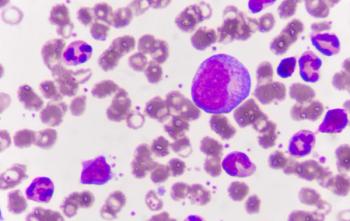
FDA Proposes Changes to Negate Mammogram Oversight
The FDA announced today that it is working to update mammography regulations, expanding the amount of information that mammography facilities must give patients and healthcare professionals. In turn, this would result in more informed decision-making – especially when it comes to breast cancer diagnoses.
The FDA announced today that it is working to update mammography regulations, expanding the amount of information that mammography facilities must give patients and healthcare professionals. In turn, this would result in more informed decision-making — especially when it comes to breast cancer diagnoses.
“Breast cancer is one of the most worrisome health concerns facing women. The FDA plays a unique and meaningful role in the delivery of quality mammography to help patients get accurate screening to identify breast health problems early, when they can be effectively addressed,” said FDA commissioner Scott Gottlieb, MD, in a statement.
“As part of our overall commitment to protecting the health of women, we’re proposing new policies to modernize our oversight of mammography services, by capitalizing on a number of important advances in mammography, like the increased use of 3D digital screening tools and the need for more uniform breast density reporting,” he added. “We’re committed to making sure patients have access to high quality mammography. Today’s proposed rule would help to ensure patients continue to benefit from advances in new tools and robust oversight of this field.”
The proposed amendments to the Mammography Quality Standards Act of 1992 (MQSA) comprise the inclusion of breast density information and, for healthcare professionals, the coding of 3 additional categories for the assessment of mammograms, including 1 called, “known biopsy proven malignancy.” This would help cases where known and identified cancer is being evaluated via mammogram to determine therapy.
“Given that more than half of women over the age of 40 in the U.S. have dense breasts, helping to ensure patient access to information about the impact that breast density and other factors can have on the risk for developing breast cancer is an important part of a comprehensive breast health strategy. Today’s proposed amendments are part of the agency’s broader commitment to supporting new innovations and methods to prevent, detect, and treat cancer. We are dedicated to working across the agency and with stakeholders to provide patients with tools and information to fight breast cancer effectively,” said the FDA’s principal deputy commissioner Amy Abernethy, MD, PhD, in a statement.
Additionally, both healthcare professionals and patients will receive more detailed lay summary letters that include information about the mammography facility, which can aid in communications after the examination.
“The FDA is committed to advancing efforts that improve the health of women. We believe the proposed rule would help empower patients and healthcare professionals by proposing improvements to the information facilities communicated to them, helping to facilitate the sometimes difficult conversations about potential risks for breast cancer,” Abernethy said.
The proposed amendments to MQSA would also help the FDA crack down on mammogram facilities and ensure that they are following quality standards. On this front, the agency is proposing that the FDA can directly notify patients and healthcare teams of facilities that are not meeting standards. They also suggest requiring only digital accessory components that are specifically FDA-approved or cleared for mammography be used and strengthening record-keeping requirements.
While the majority of certified mammography facilities are dedicated to providing high levels of patient care, today’s proposed regulations would enhance the FDA’s ability to communicate directly, if needed, with patients and their healthcare professionals in cases where facilities did not meet our quality standards and are not adequately communicating with patients about their facilities’ deficiencies, said Jeff Shuren, MD, JD, director of the FDA’s Center for Devices and Radiological Health.
“This is intended to help ensure important information that could affect decisions about patient care—such as the potential need for further evaluation or a repeat of a mammogram—is communicated as quickly as possible.”
Newsletter
Knowledge is power. Don’t miss the most recent breakthroughs in cancer care.

















































































